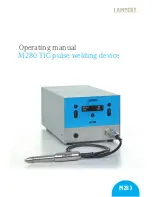
English
12
WILO SE 10/2010
7.3 Connection of the piping
All piping must be installed without tension in a noise-insulated and flexible manner. The
unit must not be subjected to any pipeline forces or torques. The pipes (including valves)
are to be fastened and supported in such a manner that neither tensile nor compressive
forces are applied to the unit.
All line connections must be established with care. Carefully tighten any connections with
hose clamps
(tightening torque of 5 Nm).
Do not reduce the pipe diameter in the direction of flow.
According to EN 12056-4, a gate valve is always required in the inlet pipe in front of the
tank and behind the non-return valve (Fig. 9).
7.3.1 Discharge piping
CAUTION! Risk of property damage!
Pressure surges which occur (e.g. when closing the non-return valve) may be several
times higher than the pump pressure, depending on the operating conditions.
• The longitudinal force-fitted connection elements of the piping should therefore be
observed in addition to the corresponding pressure resistance.
• The discharge piping, including all installation parts, must reliably withstand the oper-
ating pressures which occur.
• Avoid long horizontal pipe sections, since they contribute to fluid hammers of the non-
return valves and thus dangerous pressure surges that may exceed the permissible
value and thus pose a risk to the unit and the pressure pipe. If they are unavoidable,
appropriate onsite measures should be taken (e.g. additional valve with counter-
weight).
To prevent any backflow from the main public sewer, the discharge piping is to be designed
as a “pipe loop” of which the bottom edge must be at the highest point above the locally
defined backflow level (usually street level) (see also Fig. 9).
The discharge piping is to be installed so that it is frost-proof.
Fit first the non-return valves and then the DN 80 or DN 100 gate valve (available as acces-
sory, nuts, discs, flat gasket supplied) onto the pressure connection of the unit (pump
pressure socket with vent flange). Support the weight of the valves!
CAUTION! Risk of property damage!
Using valves which are not Wilo accessories may cause malfunctions or damage to the
product.
Then connect the discharge piping directly to the gate valve (flange piece, flexible hose
section, flat gasket and connection elements supplied).
Fig. 4: Installation of the pumps (continued)
• Connect the supplied DN 19 hose piece (Pos. 11.3) to the
vent flange and hose connection (Pos. 11.2) on the tank.
• Tighten the hose clamps (Pos. 11.4) carefully with a
tightening torque of 5 Nm!
11.4
11.3













































